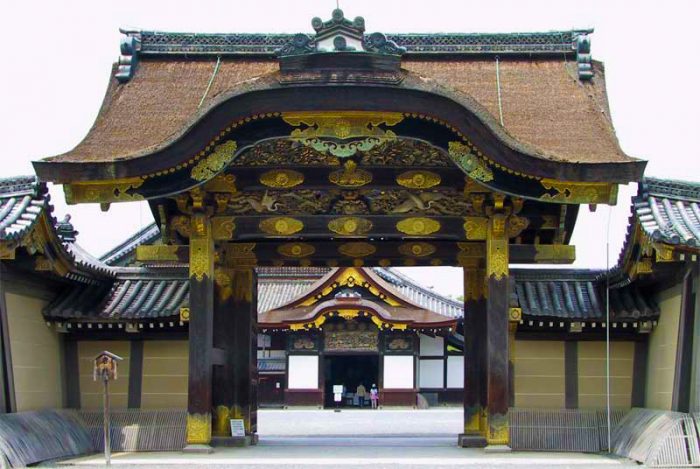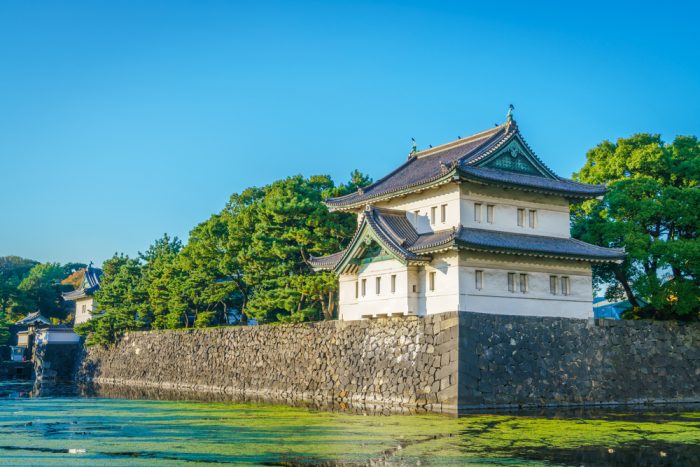Japan is a land rife with history and relics of the past. In nearly every city and town, you will find landmarks, museums, and historic sites that display the country’s culturally rich past. In fact, the United Nations Educational, Scientific, and Cultural Organization (UNESCO) has declared more World Heritage Sites in Japan than in any other country.
One of the most interesting and breathtaking elements of Japan’s history is its castles. Unique architecture and fascinating family stories accompany each site. Consider the following list of Japan’s most visited castles.
Accessing each location is easy when using your Japan Rail Pass. Why not include a castle tour on your next Japanese vacation?
The history of Japanese Castles
Japanese castles evolved from the wooden stockades of earlier centuries and developed into their most recognisable form by the late 15th century. The primary functions of Japanese castles initially mirrored those of their European counterparts: for defense, strategic control, and to intimidate enemies.
Although originally conceived of simply as fortresses to guard strategic locations such as trade routes, roads, and rivers, Japanese Castles were also built to serve as centers of governance.
By the Sengoku period, they primarily served as the homes for local feudal lords and their family, and aimed to intimidate rivals with their extensive defenses, imposing size, and the opulent design of their elegant façades and interiors.
Although more stone was used in their construction than most Japanese buildings to ensure the fortresses would endure, the castles were still primarily constructed of wood, which means that many have been destroyed over the centuries.
However, a number of castles were later reconstructed to reflect their original design, especially during the Edo period, as well as more recently as national heritage sites and museums.
Castle structures and towns
Like many European fortresses, Japanese castles were encased in huge stone walls and surrounded by protective moats. However, the walls only served to protect the castle compound and never extended to the surrounding castle towns (Jōkamachi), reflecting the lack of fear of invasion.
Another significant difference between European and Japanese castle models was the tendency to erect distinct tile-roofed buildings within the compound walls. Buildings inside the compound served as residences for Samurai, with those with a higher rank living closer to the central keep. Some castles contained an inner moat which separated Samurai residences by their rank.
The majority of peasants and commoners lived outside of the castle walls: only those in direct employ of the feudal lord or his associates were permitted to live within the compound, and designated to certain sections according to their occupation.
Osaka Castle

Osaka Castle was originally constructed in the 1580s. At the time, it was the largest castle in Japan. During the 1500s, the surrounding park was home to the wife of a Japanese ruler. Today, Osaka Castle and its Castle Park are a favorite cherry blossom viewing location in Osaka.
An observation platform overlooks the surrounding city. Not to be missed is the castle’s history museum, which includes three-dimensional pictures, holograms, and other advanced technologies in its exhibits.
- Hours: 9 a.m. to 4:30 p.m.
- Address: 1-1 Osakajo, Chuo-ku, Osaka 540-0002, Osaka Prefecture
- How to get there: Osaka Castle is located less than five kilometers from Osaka Station. If you prefer not to walk this distance, city buses are available.
Himeji Castle

Also called the Hakuro-jo, or White Heron Castle, for its bright, pristine appearance, Himeji Castle was built early in the 1600s. In 1951, it received the designation of National Treasure, and in 1993, it became the first Japanese castle to be named a UNESCO World Heritage Site.
- Hours: 9 a.m. to 4 p.m.
- Address: 68 Hommachi, Jimeji 670-0012, Hyogo Prefecture
- How to get there: Use your JR Pass to access Himeji Station, on the Sanyo Shinkansen line. Use the station’s north exit. Then, walk one kilometer down Otemae-Dori Street.
Okayama Castle

Also known as the “crow castle” because of its black-hued façade, Okayama was built in 1597 in the Azuchi-Momoyama style. The original structure, with the exception of the original moon-viewing turret, was destroyed during WWII, but later rebuilt in 1966. Located on the Asahi River, which was used a natural moat, the castle is also located close to the Korakuen Garden, considered one of the most beautiful gardens in Japan.
- Hours: 9 a.m. to 5:30 p.m.
- Address: 2 Chome-3-1 Marunouchi, Kita Ward 700-0823, Okayama Prefecture
- How to get there: The castle is roughly 1.2 kilometers or a 30-minute walk from Okayama Station. You can also take a tram on the Higashiyama Line to Shiroshita stop and then walk around 10-15 minutes to reach the castle.
Nijo Castle

Located in the heart of Kyoto, this World Heritage Site was originally constructed by a powerful shogun or chief military commander. A unique aspect of Nijo Castle is the intentional installation of creaky floorboards to warn residents of hostile trespassers.
- Hours: 8:45 a.m. to 4 p.m.
- Address: 541 Nijiji-cho, Horikawa-nishiiru, Kyoto 604-8301, Kyoto Prefecture
- How to get there: From Kyoto Station, the castle can be reached by bus or subway. Use City Bus numbers 101, 50, or 9, or take the Karasuma Subway Line to Karasuma-Oike Station, transferring to the Tozai Line to reach Nijojo-mae Station.
Hikone Castle

The hilltop castle in Hikone took 20 years to build, was completed in 1622, and served as a seat for feudal lords until 1868. The impressively preserved features of the castle include the unique façade of the castle keep, as well as a number of guard houses, gates, and collapsable bridges.
- Hours: 8:45 a.m. to 5 p.m.
- Address: 1-1 Konkicho, Hikone 522-0061, Shiga Prefecture
- How to get there: From Hikone Station, walk 15 minutes along the main road to arrive at Hikone Castle.
Matsumoto Castle

Matsumoto Castle, in the Nagano prefecture, features impressive exterior architecture, and the gardens are a coveted photo opportunity, especially when the cherry trees blossom in spring.
- Hours: 8:30 a.m. to 5 p.m.
- Address: 4-1 Marunouchi, 390-0873, Nagano Prefecture
- How to get there: The castle is a 15-minute walk from Matsumoto Station.
Hirosaki castle

Located inside Hirosaki Park, one of Japan’s best cherry blossom spots, Hirosaki Castle was built by the Tsugaru Clan in 1611. The original castle keep burnt down in 1627 after being struck by lightning, but was rebuilt in 1810 on a slighter smaller scale. Surviving elements include the 3-story castle tower, fortified moats, and the castle gates.
- Hours: 9 a.m. to 5 p.m., or 7 a.m. to 9 p.m during the Sakura Festival
- Address: 1 Shimoshiroganecho, Hirosaki 036-8356, Aomori Prefecture
- How to get there: From JR Hirosaki Station, ride 15 minutes on the Dotemachi Loop Bus and get off at hiyakusho-mae bus stop.
Nagoya Castle

Originally of the Edo period but rebuilt after World War II, Nagoya Castle is six stories high, affording panoramic views of its surroundings. This castle features up to 10 individuals in period attire, acting as genuine historical figures from the area’s past. It is also a favorite spot for viewing cherry blossoms in spring.
- Hours: 9 a.m. to 4:30 p.m.
- Address: 1-1 Hommaru, Naka-ku, Nagoya 460-0031, Aichi Prefecture
- How to Get There: From Nagoya Station, take the Meguru tourist loop bus to the castle.
Kanazawa Castle

Built in 1583, Kanazawa Castle was home to powerful rulers, the seat of the second most powerful feudal lords in Japan. The castle’s gate faces the Kenrokuen, one of Japan’s three most beautiful landscape gardens.
- Hours: 7 a.m. to 6 p.m.
- Address: 1-1 Marunouchi, Kanazawa 920-0937, Ishikawa Prefecture
- How to get there: From Kanazawa Station, take either the Kanazawa Loop Bus to stops LL9 or RL8, or the Kenrokuen Shuttle Bus to stop S8.
Kumamoto Castle

One of the most extensive castle complexes in Japan and dating back to 1607, Kumamoto Castle unfortunately suffered some serious damage during the earthquakes of April 2016. The interior of the castle keep is due to be reopened in spring 2021, but in the meantime a walkway allows visitors to get a close-up view of the keep exterior.
- Hours: The Kumamoto Castle walkway is open on Sundays, national holidays, and selected Saturdays between 9 a.m. to 5 p.m.
- Address: 1-1 Honmaru, Chuo Ward 860-0002, Kumamoto Prefecture
- How to Get There: From Kumamoto Station, you can either take a 15-minute tram ride or walk to the castle in the city center in around 30-45 minutes.
Edo Castle

The flatland Edo Castle was the home castle of the Tokugawa shoguns during the 17th century until 1867, and is nowadays part of the Tokyo Imperial Palace. While the Palace itself is not open to tours, it can be viewed from its illustrious gardens, which also feature ruins of Edo period castle structures.
Informative signs highlight areas of historical relevance and special plantings, such as trees gifted to the royal family by foreign dignitaries.
The surrounding East Gardens have been open to the public since 1968, and currently, over one million people visit each year. According to one recent visitor, during your peaceful garden stroll, you might just forget that you are in the middle of the Tokyo megalopolis.
- Hours: 9 a.m. to 4 or 5 p.m., depending on the season. Closed most Mondays and Fridays.
- Address: 1-1 Chiyoda, Chiyoda 100-0001, Tokyo Prefecture.
- Admission fee: Free.
- How to get there: From Tokyo Station, walk 7 minutes to the nearby Otemachi Station. Take the Tozai Line to Takebashi Station. From this station, the Imperial Palace is only a nine-minute walk.
When you explore Japan’s historic castles, you might even feel like royalty yourself. Check out our additional travel guides and plan your next trip today!
Cover picture: Hirosaki Castle (Shutterstock).
